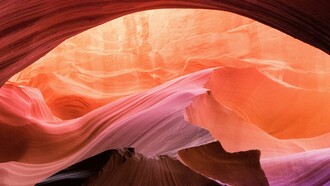The horizon of the southeast coast of Mauritius regained a pulse as our motorboat sped to the islet Ile aux Aigrettes. From the shore, a guide led us into the briefing room of the 26-hectare mini-island, which seemed more like a small auditorium, the walls embellished with pictures of the extinct flora and fauna that once flourished on this island.
During the introductory briefing, he highlighted the facts and figures of the extinct species, after which he led us through the Dodo trail to the depths of the island. He explained how this Mauritian island was ripped off its endemic resources by its colonial rulers. “Today just 2% remains of what it was once,” says our guide ruefully. We followed him, trying to comprehend in mind the exploits of the colonial rulers of Mauritius. Just minutes back the motorboat man had raced us from Pointe Jerome of Mauritius mainland. I was still reeling under its hypnosis, partly trying to absorb the names and statistics and partly trying to be aware of the deep green environs around, when a moving boulder formed at a distance woke me to my senses. Unable to believe what I saw I focussed a bit longer only to realize it was the 90+ years young Big Daddy Tortoise! Within a few minutes of us stepping onto the island we spotted the great guy. The guide said we were lucky to find Big Daddy so soon because sometimes the guy goes off wandering to the farthest spot of the island. Probably this was the way the tortoises, centuries back, had welcomed the human visitors to the island. Like the Dodo bird that became extinct here, the original Mauritian giant tortoise too had met the same fate. Prized for their quality meat and oil, the tortoises were sought relentlessly by the invading humans till they ceased to exist.
In 1965 the islet was declared a National Reserve. Some of the species, the giant tortoise being one, were replaced with living relatives. This is a ‘de-extinction’ process; Islet Ile aux Aigrettes is leased and managed by the Mauritian Wildlife Foundation, they reintroduce lost plants, birds and reptiles. Domed Mauritius giant tortoise, scientific name - Cylindraspis triserrata, got extinct on the main island of Mauritius by about 1700 and most of the surrounding islets by 1735. Its physical features like its long neck and saddleback differentiate it from other species of the same family. Female Aldabra tortoises are brought in to mate with the resident tortoise from nearby islands like Seychelles and Rodrigues to propagate the giant tortoise species, thus getting nicknamed Big Daddy.
Not just for increasing their tribe, the tortoises were brought in to replay the ecological role they once played. Tortoise poop helped in scattering the semi-digested seeds of rare flora that are native to the island. From here on I logged every tiny delight. A little ahead I saw the life-size image of a skink perched on a rock. A plaque that reads Mauritian giant skink found only in Mauritius but became extinct around 1600 probably due to introduced predators.
Fourteen species that once belonged to this island can never be brought back to life. The dodo trail in Ile aux Aigrettes is dotted with eleven bronze statues of these species, the famous one being that of the Dodo. The statues are a reminder of humankind’s imposition!
The Pink Pigeon and the Mauritius Kestrel, the Mauritius Olive White-eye and more endangered species - all retrieved from the brink of extinction by careful breeding programmes.
Besides the exotic species, the ebony trees were the major temptation for invading the islands. The trees were felled and the precious white ebony wood shipped away. Today, with extensive care and a congenial environment the ebony saplings are growing vigorously again. It is the island’s last coastal ebony forest.
Incredible conservation efforts by Mauritian Wildlife Foundation have helped in rewilding the islet. This is the least we can do to revive what is gone, in the process of resuscitating mother nature.















